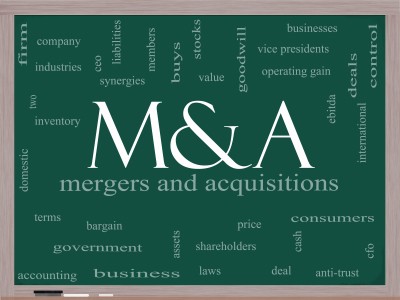Mergers and acquisitions (M&A) activity in the accounting profession has been vigorous in the past year and all signs point to that trend continuing—especially if the Federal Reserve lowers interest rates over the next few months.
Whether you are on the buyer or seller end and whether the transaction is driven by a desire to grow your market share, develop your team, or offer more specialized expertise, you want both sides to operate seamlessly from day one. But in the rush to consolidate services and offices, firm leaders often overlook a critical aspect of uniting two firms: integrating processes and technology.
Failing to address technology and processes early can hinder growth, create operational inefficiencies and negatively affect firm culture.
Why integrating technology and process is vital to a successful merger or acquisition
No matter what services a firm offers or the clients it serves, all accounting firms need to be able to bill clients, communicate internally and externally and manage time and resources as one cohesive unit. But despite their obvious importance, many firms delay integrating technology platforms and processes. This delay leads to operational divides between the old/legacy and new firms.
When staff members work on different systems or follow inconsistent processes, it fosters an “us versus them” mentality, deepening divisions within the newly merged firm. This split creates operational inefficiencies and prevents a unified firm culture from taking root.
Employees are left juggling multiple workflows, leading to confusion, frustration and decreased morale. A strong firm culture is built on collaboration and shared resources. Without unified processes and systems, that culture is difficult—if not impossible—to achieve.
Delaying integration has a real cost
One common challenge in M&A is that firm leaders don’t want to force people to adopt new systems too quickly. While this may seem like a considerate approach, delaying technology integration only prolongs the inevitable. Eventually, employees will need to learn new systems and processes, and the longer the delay, the more disruptive the transition becomes.
Delaying the integration of technology and processes also creates operational silos, preventing the firm from realizing the full benefits of the merger. When different offices or departments use their own technology and follow their own processes, the firm can’t benefit from collaboration and resource sharing. As a result, firms miss out on efficiency gains, reduced overhead and streamlined operations—which are often key reasons for merging in the first place.
How to build a unified firm through technology and process integration
To overcome these challenges, firms must prioritize integrating technology and processes early in the M&A process. This involves aligning platforms, software and workflows so staff members can work together seamlessly on day one.
This takes effort but ensures everyone is on the same page, contributing to a “one firm” culture rather than perpetuating a division between legacy and new teams.
Of course, successful integration doesn’t mean unquestioningly adopting the acquiring firm’s technology. It’s crucial to evaluate the processes and systems of the acquired firm and identify any elements that could benefit the combined organization. The acquired firm’s technology or workflows may have advantages that could improve efficiency or client service. Rather than viewing the integration as a top-down imposition of systems, take the opportunity to incorporate best practices from both sides.
Tips for consistent processes and technology across the firm
Here are a few ideas for uniting the firm.
- Start with a comprehensive assessment. Prior to the effective date of the merger or acquisition, take inventory of the technology and processes used by both firms. Identify redundancies and inefficiencies and pinpoint strengths on both sides. This assessment will help guide decisions on which platforms and processes to retain and which to replace.
- Prioritize key platforms. Focus on core systems such as billing, time tracking and client communication platforms. These are critical for day-to-day operations and provide the biggest efficiency gains when unified early.
- Invest in training and support. Successful integration requires staff buy-in. You can generate buy-in by providing comprehensive training and ongoing support. Rather than simply mandating the merged-in employees use new systems, show them how these tools will make their work easier and more efficient.
- Communicate clearly and frequently. Open communication is essential for a smooth integration process. Explain the reasons for changes and how they will benefit the firm, its employees and clients. Provide regular updates on the progress of the integration to help alleviate concerns and keep everyone focused on the same goals.
- Engage staff in the process. Get input from employees at all levels on how processes can be improved. Consider creating an integration team with members from both the old and new firms. Involving staff in decision-making helps build a sense of ownership and makes the transition smoother by incorporating the perspectives of those who are directly affected.
Mergers and acquisitions can be a valuable opportunity for firms to grow and expand their capabilities. But the long-term success of these mergers hinges on how well the firms integrate their processes and technology. By prioritizing these aspects early on and involving staff in the process, you can build a unified, collaborative culture that lays a foundation for growth in the years to come.
Thanks for reading CPA Practice Advisor!
Subscribe Already registered? Log In
Need more information? Read the FAQs





